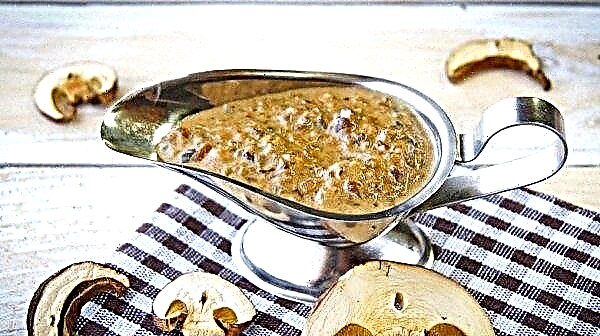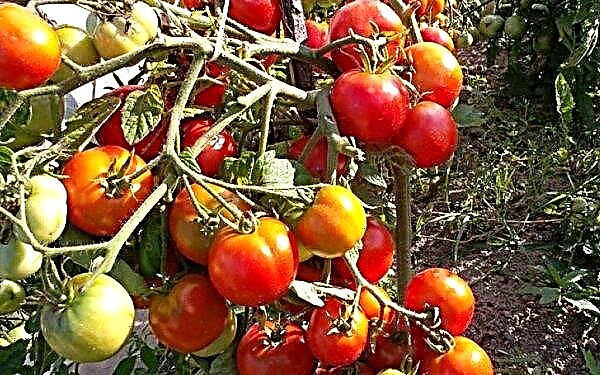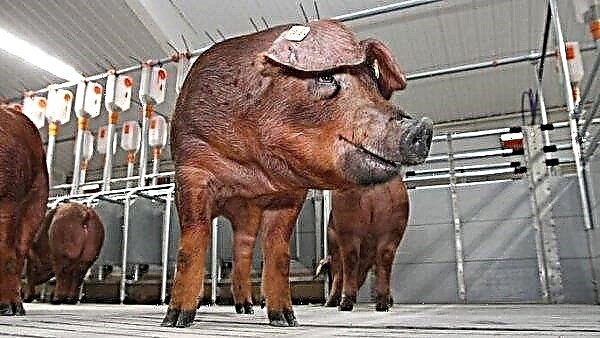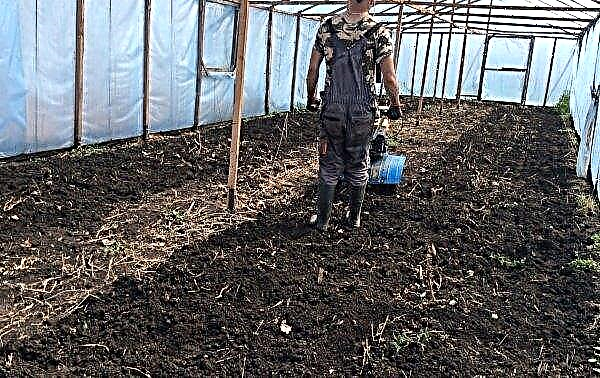Barley is one of those crops that is constantly heard by many, but upon closer examination, it turns out that few people know its scope. In order to get acquainted with its properties and characteristics, you should first find out what the seeds of this plant are, as well as how they are grown and processed in production. This and much more is discussed in this article.
What is barley?
Barley is an annual herbaceous plant in the cereal family. Due to its characteristics, it is not only a valuable feed used in pig and poultry farming, but also a food crop. Barley is famous for its unique composition and content of a large number of nutrients. Its grains have a general strengthening, cleansing, enveloping, anti-inflammatory and antispasmodic effect, as well as significantly accelerate metabolism and improve the condition of the skin.
- In addition, this culture has the following advantages:
- high productivity;
- resistance to drought;
- precocity
- low demands on the composition of the soil;
- good tolerance to various weather conditions.

History of emergence and cultivation
Barley is one of the most ancient cultures, and therefore has a rich history. Like wheat, its cultivation occurred during the Neolithic revolution in the Middle East, more than 10 thousand years ago. Barley was also widespread in Palestine for 17 thousand. Barley was sown not only by the ancient Jews, but also by the peoples neighboring them. The most ancient samples are the discovered barley grains in what is now Syria. According to estimates, they belong to the pre-ceramic period. This culture has been found more than once in the tombs of the Egyptian pharaohs, as well as in pile structures that were erected during the Stone and Bronze Ages.
Around the III century. BC e. this culture was imported from Asia Minor to the territory of Europe, and already in the Middle Ages, barley was widespread everywhere. But in the United States, this plant appeared relatively recently (presumably in the 16th century) and came from immigrants from Europe. Culture was brought to Russia from Asian countries, through Siberia or the Caucasus, and almost immediately won first place as the main food product, especially in areas where the cultivation of other types of grain was difficult or even impossible.

Botanical Description
Barley has a fibrous root system, the main part of which is located in a layer of cultivated soil (autumn plowing), and individual fragments can reach a depth of 1 m. The stalk is a hollow straw, the height of which can vary from 30 to 135 cm. The leaves are wider, in comparison with other cereals, narrowly linear, at the ends of which there are crescent ears. Inflorescences are ears of corn. The fruit of barley is a grain, which is usually called grain. It can be filmy or naked, yellow, gray or brown.
In total there are 3 main types of this culture:
- cultural - grows on all continents;
- Ethiopian - found in Northeast Africa;
- undersized - East Asia.
All 3 presented species can be combined into one - sowing.
Plant characteristics
Sowing barley can be divided into 2 main forms: spring and winter. Additionally, it has several subspecies: multi-row (ordinary), two-row and intermediate. However, ordinary barley and two-rowed have the best characteristics, and therefore they can most often be found in various regions. The growing season may vary slightly depending on the variety and climatic, as well as weather conditions in a particular region, but on average it is 55–110 days. At the same time, barley is a self-pollinator with closed flowering.
Did you know? Before the advent of the infant formula, there were cases when babies with lactose intolerance were quite successfully fed with a decoction of barley - its rich composition met all the requirements of a growing organism.
The first shoots of spring barley can appear even at a temperature of +5 ... + 6 ° C and are characterized by high frost resistance. However, for further growth and development, a temperature regime of +15 ... + 22 ° С is required. As for spring barley, it is not so resistant to frost, but it has a high ability to tolerate heat and drought. The optimum soil for barley is loamy fertile soil with a neutral pH.
 The yield level may vary somewhat from an average of 20–30 c / ha to a higher of 50–60 c / ha.
The yield level may vary somewhat from an average of 20–30 c / ha to a higher of 50–60 c / ha.
Varieties of barley
Today, there are many varieties of barley with high quality indicators.
The main types of spring barley, the characteristics of which allow the possibility of cultivation in various regions, include:
- Viscount - feed subspecies, which is usually used in the preparation of animal feed and various mixtures for farm animals. Additionally, the grain of this variety is suitable for use in brewing. The ripening period varies from 73–127 days (depending on weather and climatic conditions). The weight of one grain can be from 0.042 to 0.054 g, and the amount of protein in it can be from 11 to 13%. Yields are high - about 70 kg / ha.
- Vakula - It is highly resistant to climate change. The weight of one grain can vary from 0.046 to 0.051 g, however, with high humidity (frequent rains or a large number of irrigations), the mass can increase to 0.062 g. The protein level and the film are low. Productivity is from 50 to 90 kg / ha, however, it can significantly decrease with high thickening of crops.
- Helios - A variety that gives a rich and high-quality crop, which, however, depends on the quantity and volume of irrigation. Vegetation usually lasts about 90 days, and the mass of the obtained grain is from 0.048 to 0.050 g. At the same time, the yield level can reach 90 kg / ha.
- Duncan - a variety obtained by breeders from Canada. The stem of this variety of barley is distinguished by growth and strength, as well as high resistance to lodging and cessation. The average grain mass is 0.049 g, and the yield is 80 kg / ha. However, it can significantly decrease with thickening.
- Priazovsky 9 - refers to the best varieties of spring barley. It is characterized by high drought tolerance, as well as immunity to such common diseases as powdery mildew and rust. Pest attacks are also rarely observed. The growing season is short - no more than 82 days. The yield indicators are not high - about 60 kg / ha, but they are more than paid for by the high quality of the obtained grain, the mass of which varies between 0.045–0.055 g.

Among the winter varieties of barley, the most common are:
- Worthy - The growing season lasts from 266 to 273 days. The variety has an average yield of about 60 kg / ha, in some cases up to 90 kg / ha. It has a low winter hardiness, but tolerates drought, is not prone to shedding. The weight of one grain is 0.045 g. The percentage of protein is 12%, starch - up to 60%.
- Selena Star - having an average winter hardiness, this variety is practically not affected by brown rust, and is also highly resistant to lodging and shedding. Stems can reach 1 m in length. The growing season varies from 277 to 284 days. The mass of one grain is from 0.045 to 0.047 g, the yield level is not more than 78 kg / ha. The percentage of protein is 10.9–11.9%.
- Borisfen - the ripening period is on average from 280 to 288 days. The mass of one grain is about 0.043 g, and the protein content in it is 11–12%. The variety is characterized by high resistance to lodging and shedding, and also tolerates drought. The yield level, depending on the correctly carried out agrotechnical measures, can vary from 60 to 88 kg / ha.
- Hard worker - It differs in average productivity indicators, which do not exceed 60 kg / ha. The mass of one grain is 0.042-0.043 g, the starch content in it is 59%. The growing season is from 279 to 288 days.

There are also separate varieties of barley used for brewing.
Among them are especially popular:
- Avalon - the yield of the variety may vary slightly depending on the region of growth and ranges from 30 kg / ha to 70 kg / ha. The weight of one grain is 0.042–0.051 g. Ripening time is 67–83 days. It has moderate resistance to smut, as well as susceptibility to helminthosporiasis. Also resistant to lodging and drought.
- Gladys - It has a high level of productivity, which is about 90 kg / ha, regardless of the region of cultivation. The average weight of one grain is 0.047 g. It also shows high resistance to most diseases, including smut, brown rust and others.
- Philadelphia - medium late variety with a growing season of about 90 days. The average grain weight is 0.043 g. The yield level varies from 62–102 kg / ha. It has a high resistance to lodging and is characterized by uniform ripening, as well as productivity of bushiness.

Cultivation and production
Despite the fact that barley refers to crops with high adaptability, there are still several basic requirements for the technology of its cultivation:
- Watering - Despite the high drought tolerance, barley requires a lot of moisture during the period when the grains exit the tube and at the beginning of heading. The lack of moisture at this time does not negatively affect the pollen of the plant and can significantly increase the number of sterile flowers and reduce productivity.
- Amount of light - This crop is a plant of long daylight hours. Typically, the ripening period is from 60 to 110 days, but the lack of natural light significantly delays the onset of heading.
- Priming - barley is quite demanding on the composition of the soil and practically does not grow in land with high acidity, as well as on light sandy soil. The optimal condition for growth is the level of acidity in the range of 6.8–7.5 pH.
- Fertilizers - the cultivation of this culture requires the mandatory introduction of all necessary for the growth and development of barley trace elements. This is especially true for the first stages of growth, since in the future compensation becomes impossible. Since the plant does not tolerate organic matter, the mineral fertilizer is the best choice: phosphorus-potash (in the autumn, before plowing) and nitrogen - before the start of pre-sowing cultivation. In addition, phosphorus fertilizers are often applied to the soil, which positively affect the development of the root system of the plant and the formation of the ear.
- Soil preparation - depending on the season, the cultivation of barley may require: two methods of cultivating the land (stubble cultivation, that is, processing with special equipment to a shallow depth, and plowing) in the autumn period, snow retention in winter and harrowing of the chill, which helps to keep moisture in soil, with the onset of spring.
- Sowing - use large seeds, not less than 0.040 g in weight, that are pre-treated (for several months) with chemical preparations in order to avoid the transfer of various fungal diseases.

After sowing, barley also needs care, which consists of:
- late feeding during heading, consisting of urea (20–25 kg / ha);
- the use of retardants that prevent lodging of ears;
- weed control through herbicide treatment;
- disease control using fungicidal treatment;
- pest control using insecticides.
Important! The cultivation of barley involves the mandatory holding of crop rotation, at least once every three years. The best predecessors will be cereals, siderates, potatoes.
On a production scale, barley is harvested by direct combining at a grain moisture level of 14–16%, which avoids injury when threshing. At the same time, the harvesting time is rather tight - upon reaching full maturity, the quality of the crop remains at the same level for about 5-6 days, after which it rapidly begins to decline. In the process of interruption, depending on weather conditions, not only the quality falls every day, but also the quantity of the crop (about 1% per day).

The chemical composition of the grain
Untreated barley grains include a fairly wide range of different vitamins and micro-, macrocells necessary for human health. So, in 100 g of barley contains 288 kcal, of which 10.3 g are proteins, 2.4 g are fats, 56.4 g are carbohydrates. Additionally, ash (2.4 g) and dietary fiber (14.5 g) are present in the composition.
Important! The chemical composition of the grain changes somewhat when it is germinated. So, due to the activation of enzyme activity, the main nutrients (proteins, fats, carbohydrates) are split into more useful and easily digestible by the body.
Among other things, barley contains:
- B vitamins (B1 - 0.33 mg, B2 - 0.13 mg, B4 - 110 mg, B5 - 0.7 mg, B6 - 0.47 mg, B9 - 40 μg), as well as vitamin C - 3.8 mg, E - 1.7 mg, H - 11 μg, PP - 6.5 mg;
- macrocells: K (potassium) - 453 mg, Ca (calcium) - 93 mg, Si (silicon) - 600 mg, Mg (magnesium) - 150 mg, Na (sodium) - 32 mg, S (sulfur) - 88 mg, Ph (phosphorus) - 353 mg, Cl (chlorine) - 125 mg;
- trace elements: Al (aluminum) - 520 μg, B (boron) - 290 μg, V (vanadium) - 172 μg, Fe (iron) - 7.4 μg, I (iodine) - 8.9 μg, Co (cobalt) - 7 , 9 μg, Mn (manganese) - 1.48 μg, Cu (copper) - 470 μg, Mo (molybdenum) - 13.8 μg, Ni (nickel) - 26.1 μg, Sn (tin) - 72.2 μg, Se (selenium) - 22.1 μg, Ti (titanium) - 141.7 μg, F (fluorine) - 106 μg, Cr (chromium) - 10.6 μg, Zn (zinc) - 2.71 μg Zr (zirconium) - 38.7 μg.

Beneficial features
- Due to its rich composition, barley has many useful properties, having a beneficial effect on:
- Intestines - due to the high fiber content, grains cleanse the body of toxins, and also participate in the formation of butyric acid, which stimulates the cells of the intestinal wall.
- Bone tissue - phosphorus, calcium and copper in barley not only strengthen the bones, preventing the development of osteoporosis, but also significantly improve the condition of the teeth.
- The immune system - a high content of vitamin C significantly reduces the likelihood of developing colds and flu. And copper and iron prevent anemia and significantly increase the level of hemoglobin in the blood.
- Skin covering - selenium, contained in sufficient quantities in barley, acts as the main element for maintaining or restoring skin elasticity. Additionally, it positively affects the functioning of the heart and pancreas. Its deficiency often causes the development of cancer of the intestines, liver and mammary glands.
- Arteries - thanks to the vitamin complex of vitamins B, as well as a high fiber content, barley significantly reduces blood cholesterol, preventing the development of atherosclerosis.

Barley application
Due to the fact that barley is a storehouse of vitamins, as well as macro- and microelements necessary for the body, its grains are very often used in various fields. So, in addition to cooking and traditional medicine, this product can be found everywhere in cosmetology, where it acts as the main tool in skin rejuvenation and hair restoration procedures. In addition, grains are used for skin inflammation.
Important! Despite the somewhat high calorie content of the product, due to the high content of useful elements, barley is often part of many diet foods that are used for weight loss.
In cooking
In a wide list of various crops used constantly for food, barley is not very popular. Usually, cereals are used as a side dish for the main meat dish. In order to give more saturation to the taste of porridge, additional ingredients are added to it, which can be different vegetables, mushrooms, and also use spices and herbs. Also, this product is often put in the first dishes, giving them saturation. Few people know that this grinded grits can be added to baking, used as a binder for the filling, as well as to make various drinks.
 The main advantage of barley is its excellent combination with almost any product, as well as the ability to get new tastes and add originality to familiar dishes.
The main advantage of barley is its excellent combination with almost any product, as well as the ability to get new tastes and add originality to familiar dishes.
Medicinal properties and use in traditional medicine
Typically, barley in folk medicine is used to treat diseases of the gastrointestinal tract, respiratory system, skin, and the circulatory system.
Did you know? In his famous “ideal state,” Plato identified barley and wheat as the main components for feeding his citizens.
Among the most common recipes are:
- Decoction - It is prescribed for any diseases of the gastrointestinal tract, including colitis, gastritis or ulcers. For cooking, take 100 g of grains, pour 1 liter of water and insist for 6-7 hours. After the time has expired, the croup is further boiled for 15 minutes, after which the resulting broth is defended and filtered. Take the drug 3 times a day before meals, 50 g each.
- Infusion for diathesis - for cooking, take 400 g of cereals and 25 g of oak bark, grind in a coffee grinder and boil in 8 l of water for 5-10 minutes. After this, the broth is allowed to infuse, and after that it is added to the bath.
- For the treatment of diarrhea - 10 g of barley is poured into 150 g of water and insisted for 4-5 hours. After that, cook over low heat for 15 minutes, and then filter. Admission Scheme - 5 tbsp. l in a day.
Video: decoction of barley
Contraindications
Another advantage of this grain crop is the almost complete absence of contraindications. These grains can have a negative effect on the body only if there is an individual intolerance to the product or if there is an allergy to gluten. Also, with great care, barley should be treated for people with chronic diseases of the digestive tract. In general, it is suitable for everyone who is healthy and leads an active lifestyle.
Despite its low popularity, barley is one of the most useful crops. Its systematic eating will not only prevent and get rid of many health problems, but also significantly improve your appearance.












